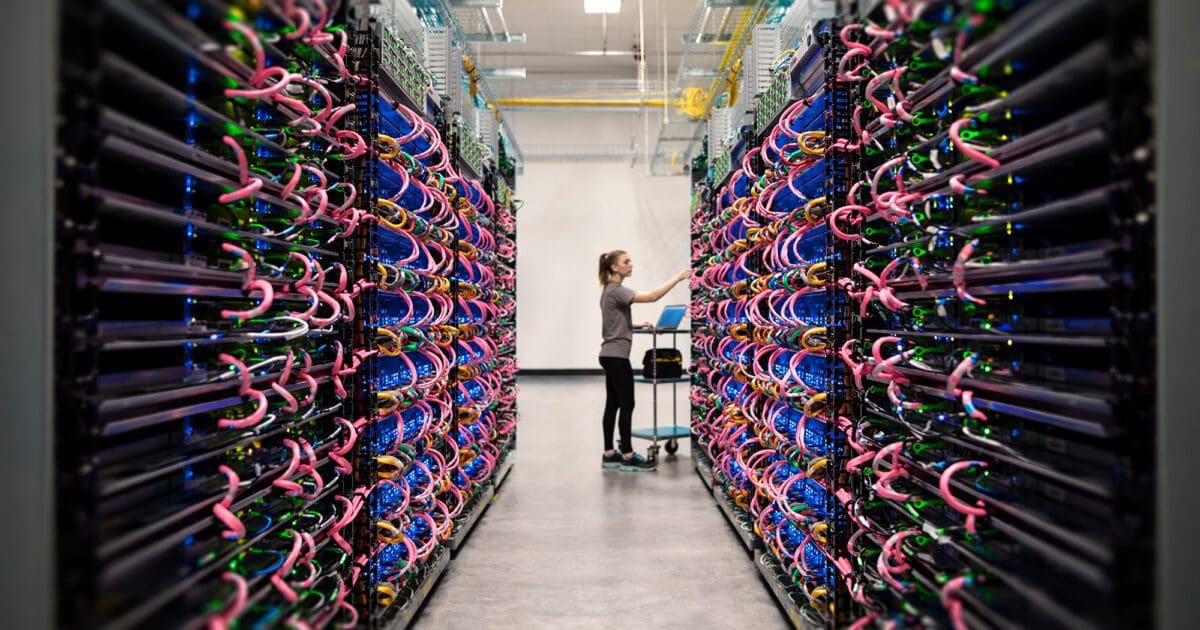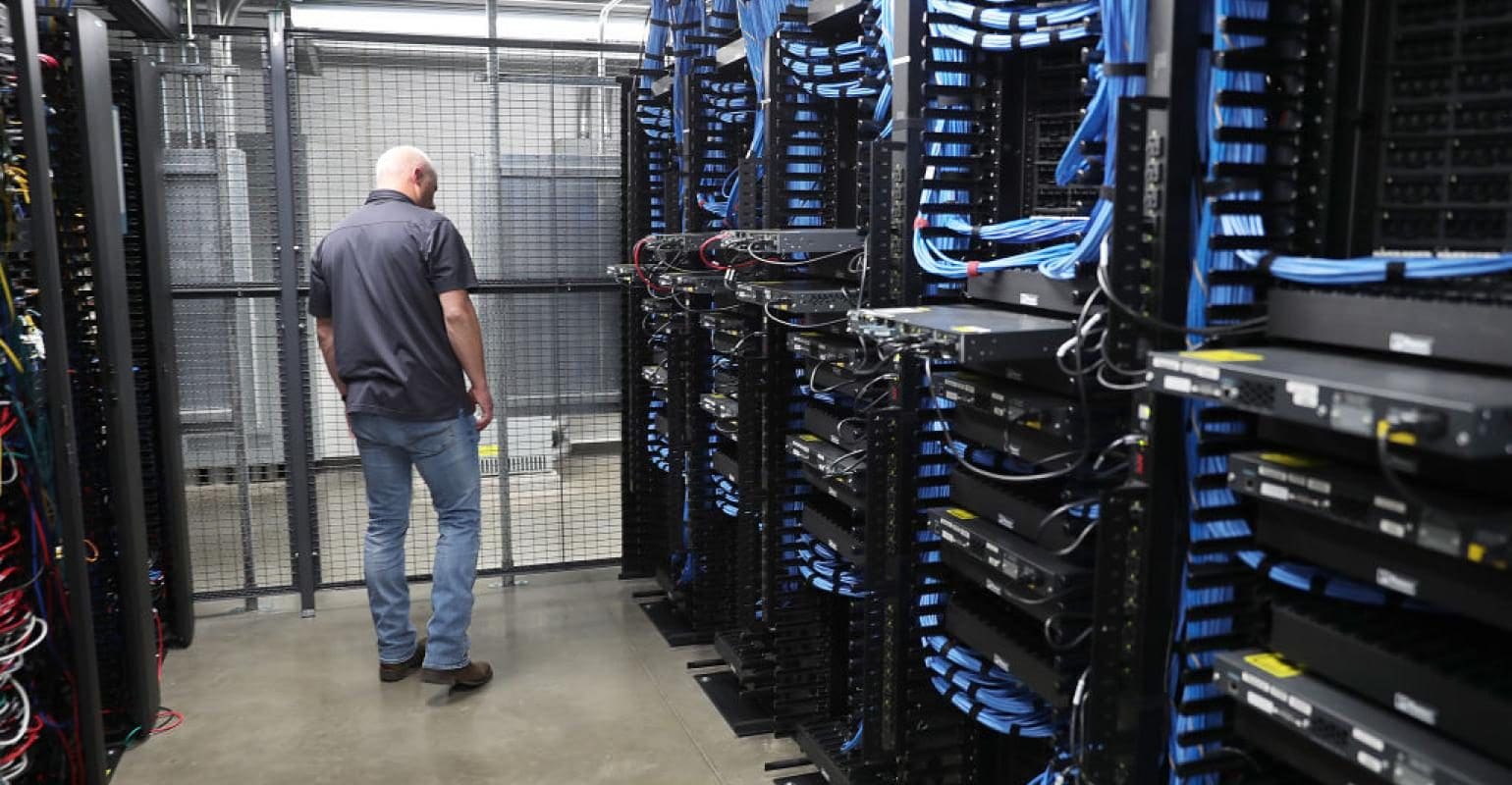Processing power is key to the performance of the software. You’ll probably quickly notice the big jump in performance when upgrading to a new computer from one a few years old. Moore’s law describes that the transistor count in CPUs has been doubling roughly every two years since the CPU was first invented. This has led to a consistent increase in computing power, driving a regular upgrade cycle.
Despite the high performance of a current high-end computer, many tasks are simply too much for one computer to handle in a reasonable timeframe. Thankfully, most of these tasks don’t affect the average home user or even many standard office jobs. Specialized professional workloads, however, are where you’ll start to find these sorts of workloads.
One option to handle this would be assigning the relevant people to more powerful high-end computers. However, this strategy is expensive and, in many cases, wouldn’t make a difference as the processing requirements are simply too high.
Server farms are the other option, rather than trying to cram more and more performance into a personal device, having one device per relevant employee, and still not having the necessary performance. A server farm essentially outsources the processing power. In this case, that means having many servers clustered together that perform the heavy processing tasks assigned to the server farm by the employee. The processing tasks are then farmed out to the servers.
Contents
Key Features and Advantages of Server Farms
The defining factor of a server farm is that you’re no longer limited to one device performing the processing. Instead, the processing power is provided by tens, hundreds, or even thousands of servers, all grouped in a cluster.
The servers themselves are typically located in a server room or datacentre. Here they can be configured with high-speed connections between each other and high-speed networking to receive the workload to be processed and transmit the completed workload back in good time.
By carefully managing the actual performance of all servers, it can be possible to tune the overall performance to be achieved at a reasonable cost. Servers are generally run 24/7 though depending on the workload, this may not be achievable. Running at maximum performance at all times uses a lot of power. It also means much cooling is required, needing even more power. Many server farms may run below their peak performance to achieve a high performance per Watt ratio.

Subtypes and Variations
In code development jobs, many languages need applications to be compiled before they can be run. This compilation process is very processor intensive and, in large applications, can take hours. A server farm can help reduce the compile time by offering more performance than possible in a single computer. Server farms can also run 24/7, allowing developers to queue up a compile process to run overnight while being able to turn off their own machines. Server farms used exclusively for compiling software may be known as compile farms.
In computer graphics roles, rendering time can often be long. This isn’t a massive issue for still images, though it can take time. Video rendering can take a long time, especially for cinema class films. Not only are scenes incredibly complex, but they’re also high resolution, and there are many of them, as many frames are needed per second. Server farms dedicated to rendering tasks may be known as rendering farms.
There is very little difference between a server farm and a supercomputer. Both are extensive collections of servers designed to operate together to perform a task. There is no clear defining difference between the two. Historically, supercomputers did use special purpose hardware. However, the current trend in supercomputing is to use more off-the-shelf server components.
A Cloudy Future
Server farms are expensive. They’re power hungry, need lots of cooling, and need data center infrastructure. Server farms are also costly to set up, with high up-front hardware costs. To make that worse, they face regular obsolescence. It’s generally held in the high-end data center industry that a 7-year-old data center is obsolete. Within this short time, workloads can increase as performance demands increase.
The only real solution to this is offered by the hyperscalers. Hyperscalers are the giant tech companies like Google, Amazon, and Microsoft that are big enough to build and run many massive data centers. These companies rent out their data centers’ computing performance as a cloud platform. This access is often virtualized.
The idea is that instead of paying to buy and run the hardware, you simply rent access to what you need – when you need it. This has the annual budget-friendly factor of not having any high, recurring up-front costs. Instead, you simply pay for what you use. Helpfully, you’re not even limited to precisely one hardware setup either. Suppose you have a small, relatively non-urgent workload. In that case, you can simply configure it to be run on a smaller and – critically – cheaper virtual server. This also goes the other way. If you have a large or urgent project, you can pay more for an even larger virtual instance to have more processing power to finish sooner.
Realistically, cloud services offer several compelling advantages over server farms. The only potential issue is the cost, which as a commercial service may be higher per unit of processing than that of a local server farm. It’s worth noting that hyperscalers benefit from economies of scale, which filter into their pricing.
Conclusion
A server farm is a collection of servers, typically located in a server room or data center, to which tasks requiring lots of processing power are farmed out. This provides several benefits, including high performance and 24/7 operation. Cloud services from hyperscalers are the main competing option. They offer several compelling benefits, including a lack of up-front hardware costs and price/performance flexibility by task.




